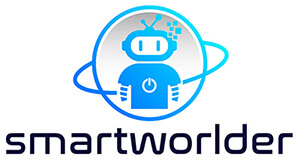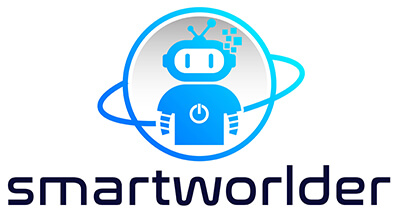What are Smart Toys?
Content
– What makes a toy 'smart'?
– Examples of smart toys
– The pros and cons of smart toys for kids
– The Internet of Toys - IoToys
– Final thoughts
As the world gets more connected through the Internet-of-Things (IoT) and computers feature more and better machine intelligence (artificial intelligence – AI), the world of children’s toys in modern societies gets revolutionized beyond simply touchscreen and multimedia technologies.
AI-powered and internet-connected toys represent the future of play and learning for children.
Smart toys present enormous promise, especially in the area of educational toys, but also pose potential risks to children if not designed responsibly. Smart toys can be a child's best friend or a creepy surveillance tool without responsible design and a focus on children's rights.
Let’s start by looking at what a smart toy really is.
What Makes a Toy ‘Smart’?
Similar to the question of how to define exactly what 'smart technology' is, there is no clear-cut definition of what a ‘smart toy’ is. A lot of marketing hype has resulted in misconceptions that any toy is ‘smart’ if it contains a computer chip, has some preprogrammed functions or multimedia capabilities.
Another area of confusion are educational toys that are marketed as tools to help your kids become smarter.
What best describes a smart toy is the way its on-board machine intelligence enables a play or learning experience for the user that simulates human-like intelligence. These smart toys can learn from and speak with the user, change their behavior, provide interactive actions, and customize learning lessons.
Examples of Smart Toys
Most smart toy developers aim their products at kids aged between 2-12 years old. Some toys provide a physical playtime experience for young kids, including dolls and action figures. Toys such as Robosapien or Webkinz allow children to practice social skills such as holding a conversation and taking turns.
This Smart Teddy Bear, for instance, comes with touch and app controls and is designed to teach kids various things, including potty training, managing meals, and eating healthy.
At the same time, older children receive advanced AI features such as educational apps.
In May of 2021, the World Economic Forum announced the eight winners of the inaugural Smart Toy Awards. The competition used four design and assessment guidelines to evaluate applicants and select winners of the inaugural Awards:
Data privacy and cybersecurity: How does the toy protect children and other users’ data privacy and cybersecurity?
Accessibility: How is the toy accessible for children with physical, mental, and learning disabilities, including neurodiversity, and children speaking languages other than English and from other cultures?
Use of AI and transparency: How does the toy innovatively use AI and how do the benefits of its use outweigh potential risks? How is the use of AI communicated to the child user and their parents/guardians?
Age appropriateness and healthy play: How is the toy age – and developmental stage – appropriate and how does it promote healthy play and child development?
The eight winners are Intelino, Twin Science, LEGO, Leka, PlayShifu, ROYBI, CoderMindz and LuxAI.
Intelino
Discover why this award-winning robot train has captured the imagination of kids, parents, makers and educators alike!
Twin Science
Twin Science offers several educational kits like the Robotic Art Kit
Or the Coding Kit:
LEGO
No longer just your stackable bricks, LEGO VIDIYO is a music video maker for kids, that combines old-school bricks with state-of-the-art AR tech to revolutionize kids screen time.
Examples are the LEGO VIDIYO Boombox Building Kit
Or the LEGO VIDIYO Punk Pirate Ship
leka
The Leka is like a magical glowing orb that's designed to help special-needs children improve fine motor skills, visual cues and social skills. Leka is an interactive and multi-sensory smart toy, offering children with special needs the ability to play fun and educational games.
PlayShifu
This AR toy company makes 16 products that offer unique tactile play experiences for ages 4-11 years, kids build STEAM and other foundational skills such as logical reasoning, creativity, and more.
Examples are the Plugo STEM Wiz Pack (a bundle of the most popular Plugo kits-Count, Letters, Link, and Gamepad).
or the Tacto Coding Pack
Roybi
ROYBI Robot introduces kids to technology, math, science, and multiple languages (English, Mandarin, Spanish-coming soon).
CoderMindz
This board game and STEM toy teaches coding and Artificial Intelligence concepts using a fun game play. Teaches Image Recognition, Training, Inference, Data, Adaptive Learning, Autonomous and more. Also teaches Coding concepts like Loops, Functions, Conditionals and Algorithm writing and more.
LuxAI
LuxAI's QTrobot is an expressive social robot designed to increase the efficiency of special needs education by encouraging an active and engaged interaction between children and their parents.
The Pros and Cons of Smart Toys for Kids
Play is essential for children of all ages because it enables them to develop specific skills. It is vital for a child's physical and social development. Play entails interaction and fantasy and it helps kids to better understand the world that surrounds them.
A toy is any object a child incorporates into their play. By playing, children develop various cognitive, perceptual, motor, linguistic, and communicative skills. When playing alone, a child interacts with objects and performs various movements, such as picking or throwing them, placing them in a row, or stacking them on top of one another. Not all these movements are simple; for example, building a tower with stackable cubes can be difficult for children between ages 2 and 3 years, especially if the cubes are small and the tower is high.
As toys become more technical and sophisticated, children are exposed to technology at an early age, and it pervades every aspect of their lives. From robotic toys and social media to the classroom and home, artificial intelligence (AI) will become more common in the daily life of a child.
As more and more toys use AI, they pose a profound potential impact on children – positive or negative.
Benefits of Smart Toys
The basic purpose of toys – to entertain – remains unchanged; but smart toys can go way beyond that. They help kids
develop social skills as their behavior receives immediate feedback
develop problem-solving skills as the interaction boosts cognitive processes
think creatively and use their imagination as they toy encourages exploration
learn essential skills essential for today’s digital world. Some toys offer lessons in STEM disciplines (Science, Technology, Engineering, and Math) and programming and even basic concepts of AI
develop their motor skills, which is a particular issue with learning-disabled children.
Detecting developmental disorders
The personalization of interactive media, which analyses and responds to children’s individual input, offers significant educational benefits. Individualization is at the core of dramatic changes to learning technologies which use software that adapts to an individual child’s needs and progress, giving students choice in the pace, place, and mode of their learning.
Going beyond that, ubiquitous computing and ambient intelligence could even support innovative application domains, such as the detection of motor impairments within the home environment. For instance, the Spanish research project EDUCERE (“Ubiquitous Detection Ecosystem to Care and Early Stimulation for Children with Developmental Disorders”) is an ecosystem for ubiquitous detection, care, and early stimulation of children with developmental disorders.
The aim is to determine if children are capable of building the tower and to analyze how they do it in order to detect minimal delays in development, which may lead to preventive monitoring of some children or, when appropriate, to the implementation of an early attention program.
Risks and concerns about smart toys
In the absence of clear guidelines, parents and educators are left to make decisions about smart toy products with incomplete information and complex implications for their children’s health and privacy. As more AI for children comes onto the market, all relevant stakeholders need to construct mechanisms to protect children while enabling ‘precision education’ and other benefits of AI.
While more and more smart toys hit the market, little to no governance exists for their design, development, and use. Smart toys pose many potential risks for children including data privacy, cybersecurity, government surveillance, and lack of transparency and accessibility.
Smart toys and robots that interact with your children might look like a good idea at first. However, these smart toys can put your family's privacy at risk.
Smart toys have several features that acquire and process information. Some features include a sensor and microphone. These toys ask private questions about your life to create friendships. They also listen to what the kids say when playing.
Point in case, in 2017 a federal agency in Germany prohibited the sale of My Friend Cayla, a smart toy manufactured by Los Angeles-based Genesis Toys, because “without the knowledge of the parents, the conversations of the child and other persons can be recorded and forwarded. The toy could also be used by a company to individually address the child or parents with advertising. Further, if the wireless link (such as Bluetooth) is not adequately protected by the manufacturer, a toy may be used unnoticed by nearby third parties to listen in on conversations.”
There are some general guidelines you should follow before buying a smart toy for your children.
Conduct research to understand the features of the toy and see if it has received recommendations from consumer watchdogs. Also inquire about the manufacturer’s reputation.
Discuss with your kids. Take time to talk to your children about the dangers of exposing information to these smart toys. Educate them about the limit they should not cross when interacting with these toys. They should also turn them off whenever they are not in use.
Monitor your kids’ activities. Initially keep an eye on how your children use their toys to prevent a privacy breach. You should also ensure they are switched off during family discussions.
If you have any concerns, contact the manufacturer to understand how your data is protected (or not).
The internet of toys – IoToys
With the emergence and growth of the Internet-of-Things (an ecosystem of web-enabled smart devices) there is an emerging sub-segment called the Internet of Toys (IoToys). Basically, this refers to sensor-equipped physical toys that interact not only one-on-one with children but are wirelessly connected to other toys and/or cloud-based platforms. This allows an entire new level of interaction. Haptic IoToys offer opportunities for programming the interface to create interactive projects and actions.
These developments promise each child a customized, distinctive, and dynamic interaction with their toys using the Internet:
IoToys could use voice and/or image recognition, connecting to the cloud to analyze, process, and respond to children’s conversations and images
App-enabled toys such as drones, toy cars and robots
Toys-to-life, which connect action figures to video games
Children’s tech wearables such as smart watches and fitness trackers.
Final Thoughts
Children are using smartphones and tablets at an increasingly earlier age and parents often make a deliberate decision in favor of connected multimedia devices because it keeps their kids occupied. However, this doesn’t render parental supervision unnecessary – maybe even on the contrary.
It’s the same issues with smart toys. As more and more of their kids’ friends have them, the pressure on parents will grow to buy them, too. While there undoubtedly are benefits, the privacy and hacking risks with these toys might not be as obvious as with smartphones.
Check out our SmartWorlder section to read more about smart technologies.












